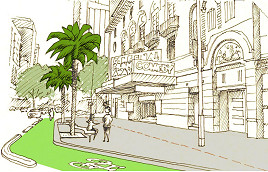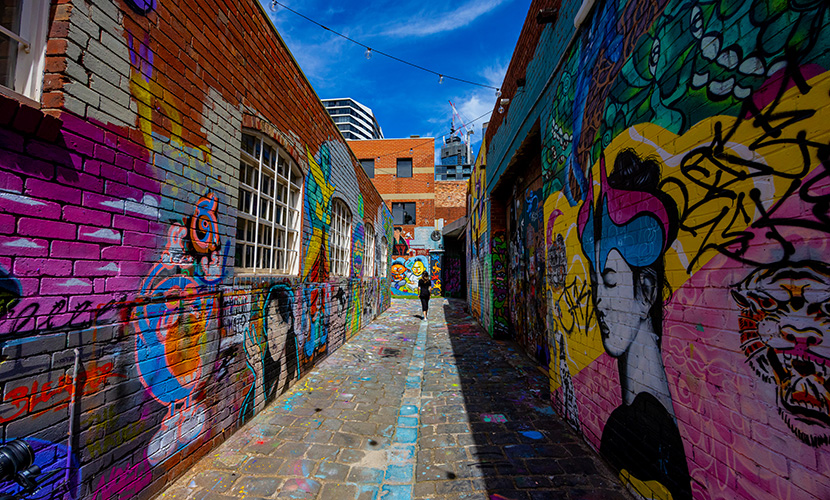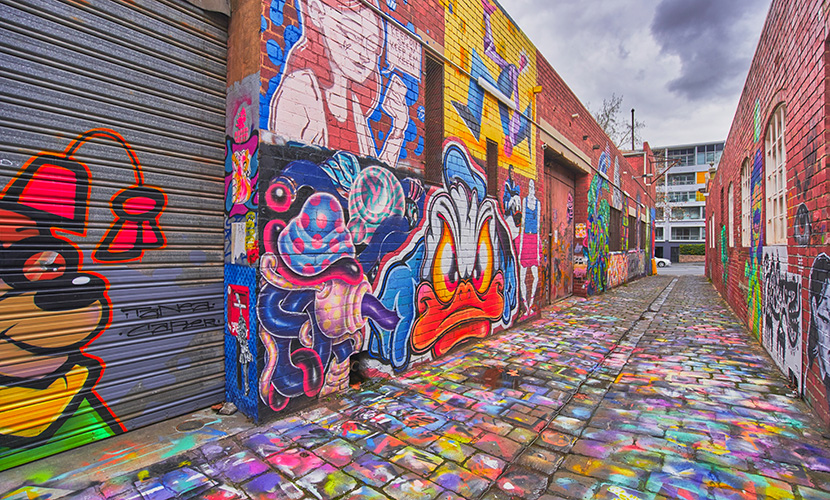The problem with urban art
People really hate bad tags. It is something that has made legitimate and good street art and graffiti hard to navigate.
The council takes a zero tolerance on tagging, which I can somewhat understand. Graffiti culture has been a major part of Melbourne’s culture since the early 1980s and many great artists have started out with graffiti (tagging) on their local milk bar. I certainly did, then I moved to trains, and then to doing pieces. And then I went to art school and the Blender Studios.
Graffiti is not ugly when done well, it is a beautiful form of calligraphy. It is just that if you are not part of the graffiti movement then you have little chance of understanding the art as the culture is exclusionary and if you are not part of it then you will never understand it. That doesn’t mean that it is bad or has bad intentions.
Many graffiti kids go on to awesome things, becoming great fine artists or world-famous street artists. Keep in mind that Banksy, Adnate and Rone all started out tagging.
Urban culture is like a sport for young people; they meet up with like-minded people and talk shop and walk many miles exploring the city looking for art.
There are a lot more anti-social things young people could be doing. And it’s better than locking yourself in a dark room and playing video games.
I have done a lot of youth work with the City of Melbourne through its Signal program and as the Youth Arts Officer for the City of Yarra for many years, and I have never met a young person who doesn’t engage with urban art on some level. It is awesome and kool and young people love it.
The urban art culture is used as one of the main marketing tools of Melbourne and Victorian tourism. And as we artists set up more lanes the marketing teams are quick to push it as true urban Melbourne. It’s in every magazine and all over the airport in every terminal.
Melbourne has made so much from the urban art culture and given so little in return.
The reason all these giant skyscrapers are popping up in every lane we create is because street art has made Melbourne cool and rich.
Hosier Lane was once the highlight of Melbourne’s urban artscape, voted the number one free tourist attraction in Australia by Lonely Planet for many years. The council has done little to maintain Hosier and Rutledge lanes, in fact, I feel they have deliberately worked against it. I personally gave the council a 10-page plan on how to fix the lane, which was ignored.
I would be happy to meet with them any time to try to make urban culture in Melbourne what it once was. The truth, I fear, is that the government wants to develop it and make money from it.
This is not new and has happened in so many lanes: Blender Lane, Electric Place, Lovelands, Union, Duckboard Place, Presgrave Place, Higgson, Literature, and AC-DC just to name a few. All these lanes have been completely changed from construction. Someone is making a hell of a lot of money from these lanes and its art, and it’s not the artists. I hope that the government understands how important urban culture is to Melbourne and stops thing about short-term gains, developing a place like Hosier Lane will alter the city in a way that will never be fixable.
The government has a natural hand in the changes that happen in the city on all levels.
Every part of the city has gone through some form of bureaucratic process. Every tree, every park and every public space has been carefully crafted by governments to make the city the best it can be. In recent years these spaces have become giant towers and have usurped many of the only spaces in the city left free to the young and adventurous.
So, tagging has become easier than making art.
But people need to remember graffiti artists and street artists love this city. Often what happens on the street has nothing to do with the urban art culture. An example of this is a few weeks ago the State Library was hit hard with tags all over the front.
This is not something the urban art culture would do; we have rules about beautiful art and beautiful buildings. It is more than likely a bunch of drunk dickheads from the suburbs came into the city, one of them would have had a spray can and the rest of the story writes itself.
Yet, people use these types of incidences to condemn the movement and hate on graffiti artists. The council has taken a zero tolerance on tagging but has stated that they like “mural art”.
I’m not sure who they consult with on this idea. I know when I worked for City of Yarra the graffiti removalists became the unwitting curators of the street, back then I realised this problem and worked closely with the engineering department to ensure that this problem was mitigated.
Last week a famous and kool artist “Getnup” (get’n up) did a beautiful mural in Howey Place – another laneway that has been under construction, and lost much of its awesome art, now all the shops are out of business (the council is ironically giving the empty spaces to artists for a few months but that is a different article). Within a day Getnup’s artwork was removed. It was a great artwork that made the space interesting. So, the next day the artist went back to the removed mural and wrote “I will not be obscene” over and over referencing the Simpsons, and the council’s rule of removing offensive art within 24 hours.
These artists pay for their own paint, and risk horrible laws that the government keeps tightening, to make the city more interesting. There is a deadening in Melbourne that has been going on for a long time. The creatives make the city kool and the rich people exploit it. Many of the changes that have happened in the CBD cannot be undone and we are very much in danger of creating a bland and deadened city, which has been exploited into mediocrity.
It’s a big problem that takes big answers, but it can be done. Hosier Lane can be great again and the city can be the cultural hub it once was, but it would need to take a sacrifice of exploitation by the rich and the people benefiting from its gentrification.
It would need to be envisioned not as a financial opportunity, but as a cultural one. There would need to be understanding and recognition of the problems before we can form the ideas for solutions.
The city is beautiful, and the laneways were the cultural veins of a once internationally recognised creative hub, but that was then. And now …

Council endorses office tower at Flinders Lane despite querying car park demolition





 Download the Latest Edition
Download the Latest Edition